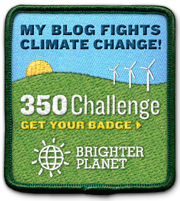We've been curious about where our resident American Crows have nested - somewhere across the street in a stand of pines we assume, based on the numerous times we've watched one fly in that direction carrying a stick. Reina noted they're still flying in that direction, but not carrying sticks. Must be done building, egg laying can't be too far behind.
The first round of migrant birds are back in force, and many of them caught our attention yesterday. Song Sparrow songs came from every corner, each the same as the others (they speak the same language) but completely different (they each have a unique voice). Our Red-winged Blackbird, which we like to think is the same as previous years, perches atop his favorite spruce and keeps rivals away. Soon the females will return and, being polygamous, he'll use his song to attract a few.
Dark-eyed Junco numbers increase daily, we counted more than two dozen under our feeder. Best of all the Eastern Phoebe is back, even checking out his nest from last year, and some of our native plants are returning.
But what caught and held our attention was something we found in the pond, not surrounding it. What first looked like a small algae bloom a few days ago didn't look like algae today. We're wondering if it's an egg mass of some sort, if you have any ideas, please let us know! (Click for larger images.)


On the floor of the pond, below the second of the green, algae-like clusters, were hundreds (if not thousands) of bubble-like . . . well, bubbles. Or, perhaps eggs scattered along the bottom? Or maybe the vegetation is wickedly photosynthetic? We're grateful for any ideas, either identifying them definitively, guessing what they might be, or definitively excluding eggs.


If this helps, we know we have healthy numbers of Spring Peepers, American Toads, and Bullfrogs. Fish-wise, the pond holds many, many catfish, several koi, and one gar. In a very non-naturalist way we've never identified them past those distinctions. We look forward to your thoughts!
-






2 comments:
My wife and I are not 100% sure but the green mass could possibly be an example of algae-salamander mutualism.
http://images.google.ca/imgres?imgurl=http://hydrodictyon.eeb.uconn.edu/eebedia/images/e/e2/OophilaCTsmall.jpg&imgrefurl=http://hydrodictyon.eeb.uconn.edu/eebedia/index.php/Tobias_Landberg&usg=__ZWBsrovad91mGcGRKzw5Jb3Fsj0=&h=216&w=216&sz=79&hl=en&start=7&um=1&tbnid=iChR7Xn7Ta_skM:&tbnh=107&tbnw=107&prev=/images%3Fq%3Dsalamander%2Beggs%2Band%2Balgae%26hl%3Den%26sa%3DG%26um%3D1
nishiki_85 - I admit, at first I thought you were being sarcastic and silly, mostly because that's how I would have answered.
But then I read the info at the link you provided - Wow! How very cool, and who knew? Well, obviously you guys did, but this is exactly what I mean about learning from regular walks around our loop!
Whether our green blobs are an example of salamander-algae symbiosis or not, I have a deeper appreciation of nature this morning, and I can't wait to share that with Reina.
Thanks! I'll be sure to post if I catch anything happening as they develop further!
-Mike
Post a Comment